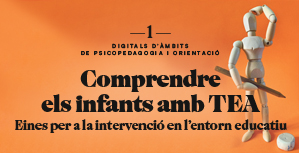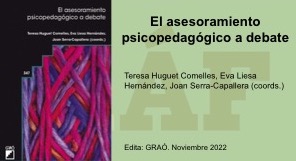The triad of the inclusion
Abstract
This report describes the introduction of an inclusion programme in a mainstream school in London through a resource base unit called “The Windmill”. Based on the prevalent “Triad of Impairments” which Lorna Wing developed more than 30 years ago; communication, social interaction and imagination, The Windmill Classroom has been the pilot centre to implement a positive concept of this Triad. A triangular framework model consisting of students, parents and professionals forms the Triad of Inclusion. The main interventional tools used in the pilot centre are explained following this model.
References
Bondy, A.S. and Frost, L.A. (1994). The Picture Exchange Communication System. Focus on Autistic Behaviour, 9; (3), pp. 1- 19.
Boyd, B.A. (2002). Examining the relationship between stress and lack of social support in mothers of children with autism. Autism, 17; (4), pp. 208-215.
Carpenter, B., Ashdown, R. and Bovair, K. (Eds.) (2001). Enabling Access. Effective teaching and learning for pupils with learning difficulties, London: David Fulton.
Charman, T., Pellicano, L., Peacey, L.V., Peacey, N., Forward, K. and Dockrell, J. (2011). What is Good Practice in Autism Education?, London: AET.
Cox, A.J. (2006). Boys of few words: Raising our sons to communicate and connect, Guilford Press.
del Rio, M. J. (Ed.) (1997) Lenguaje y comunicación en personas con necesidades especiales, Barcelona, Martínez-Roca.
Gallego Ruiz & Gallego Ortega (1995) Manual de logopedia escolar, Málaga, Ediciones Aljibe.
Gray, C. and Garand, J. D. (1993). Social stories: Improving responses of students with autism with accurate social information. Focus on Autistic Behaviour, 8; (1), pp. 1-10.
Irish Primary Principals’ Network (2008). Autism provision setting up new units, Glounthaune Co Cork: IPPN.
Janice, E. and Janzen, M.A. (1999). Autism, facts and strategies for parents. Therapy Skill Builders, 100, pp 92.
Jones, G. (2002). Educational provision for children with autism and Asperger syndrome: meeting their needs, London: David Fulton.
Jones, G., Meldrum, E. and Newson, E. (1993). A descriptive and comparative study of interventions for children with autism: Summary report. Birmingham: University of Birmingham.
Jones, G., English A., Guldberg K., Jordan, R., Richardson, P. and Waltz, M. (2008). Educational provision for children and young people on the autism spectrum living in England: A review of current practice, issues and challenges, London: Autism Education Trust.
Jordan, R. (2011). Social and emotional understanding, unit 2, Special Educational Needs of Children with Autism module, DE course Children with Autism, School of Education, The University of Birmingham.
Jordan, R. (2008). Autism spectrum disorders: a challenge and a model for inclusion in education. British Journal of Special Education, 35; (1), pp. 11-15.
Jordan, R. (2001). Autism with severe learning difficulties, London: Souvenir Press.
Lambe, J. and Bones, R. (2006). Student teachers’ attitudes to inclusion: implications for Initial Teacher Education in Northern Ireland. International Journal of Inclusive Education, 10; (6), pp. 511-527.
Matson, J.L., Matson, M.L. and Rivet, T.T. (2007). Social-skills treatments for children with autism spectrum disorders: An overview. Behaviour Modification, 31; (5), pp. 682-707.
Mesibov, G., Schopler, E. and Shea, V. (2004). The TEACCH Approach to Autism Spectrum Disorders, New York: Springer.
Rafferty, Y. (2001). Benefits and risks of reverse inclusion for preschoolers with and without disabilities: Parents’ perspectives. Journal of Early Intervention, 24; (4), pp. 266-286.
Schopler, E. and Mesibov, G. (1983). Social behaviour in autism, London: Plenum.
Simoni, E. (2010). http://EzineArticles.com/4970120 (Accessed 15 November 2011).
Smith, C.M., Rogers, S.J. and Dawson, G. (2008). The Early Start Denver Model: A comprehensive early intervention approach for toddlers with autism, in J.S. Handleman and S.L. Harris (Eds). Preschool Education Programs for Children with Autism.
Walker, M. (1973). An experimental evaluation of the success of a system of communication for the deaf mentally handicapped. (Unpublished MSc thesis available for reference from author or from following libraries: RNID, Gower Street, London; The Hilliard Collection, John Ryland's Library Manchester University),
Whitaker, P. Barratt, P., Helen, J., Potter, M. and Thomas, G. (1998). Children with autism and peer group support: "Using circles of friends". British Journal of Special Education, 25 ; (2), pp. 60-64.
Wing, L. (1995). Autistic Spectrum Disorders: an aid to diagnosis, London: The National Autistic Society.
Wing, L. and Gould, J. (1979). Severe impairments of social interaction and associated abnormalities in children: Epidemiology and classification. Journal of Autism and Developmental Disorders, 9, pp. 11-29.
Downloads
Published
Issue
Section
License
The authors maintain their copyright and give the right to the first publication of the work to the journal, registered under a Creative Commons Attribution-Non Commercial-NoDerivs license. This license allows others to download the works and to share them with others as long as they credit the author, but it does not allow for any kind of modification or commercial use.















